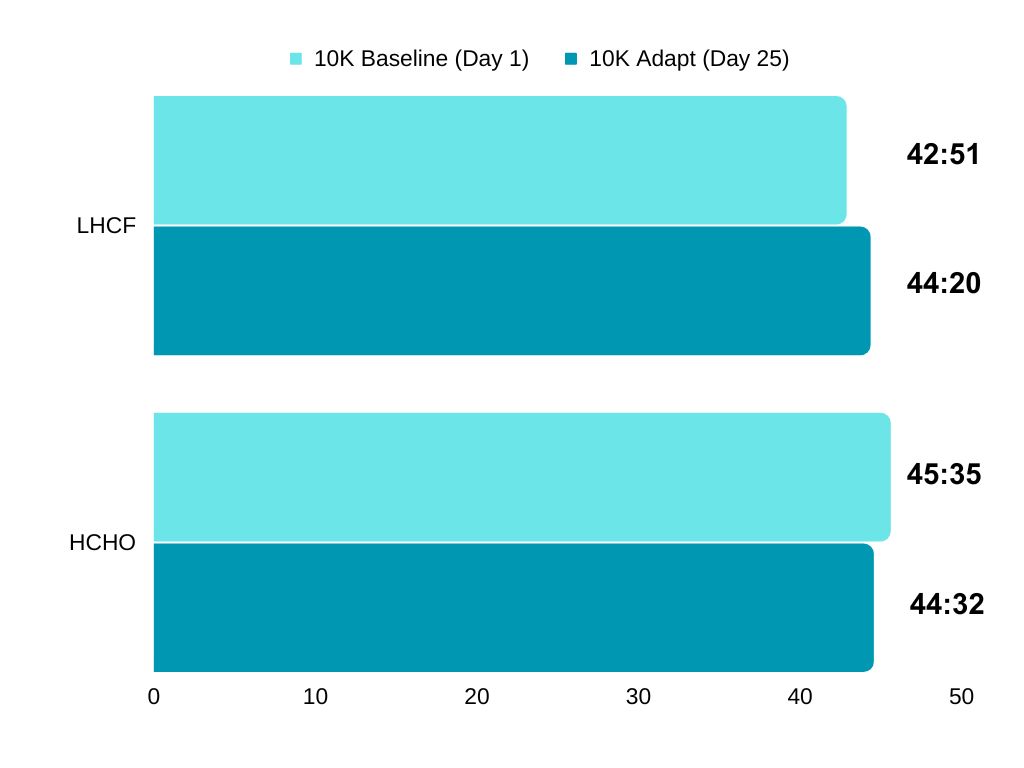August 8, 2023 by Fuel & Fortify
Unveiling the Pros and Cons of Low Carb

The world of endurance sports is a realm of continuous exploration and experimentation, where athletes are often their own ’lab rats’—experimenting on every marginal gain out there. Among the array of training methodologies, fasted training, low-carb and ketogenic diets have emerged as nuanced approaches to endurance fuelling.
Fasted Training and Fat Oxidation
Fasted Training involves exercising in a state of low glycogen levels, relying on stored fats as the primary energy source. While fasted training is not a one-size-fits-all solution, it can significantly impact an athlete’s metabolic flexibility and optimise fat oxidation.
Also, to get one thing clear—fat oxidation and fat loss are two distinct biochemical responses. Fat loss revolves around long-term energy balance with respect to fat, where the calories consumed are compared to those burned. On the other hand, fat oxidation (or fat burning) is the body’s ability to use fats as fuel for energy.
The Fat Adapted athlete
The curiosity around “fat adaptation” stems from the fact that the body’s glycogen stores are limited, and they can be depleted during prolonged, intense exercise, leading to fatigue and a decline in performance. By training the body to become more efficient at using fat as a fuel source, endurance athletes aim to preserve their limited glycogen stores and delay the inevitable ‘bonk’—in turn, making the athlete more metabolically flexible.
Higher fat oxidation has numerous supposed benefits—assisting in stabilised blood sugar levels, weight management and the neurological benefits of ketone bodies (Yang et al.).
Burke and colleagues published an initial study in 2017 demonstrating the effect of two contrasting diets on 10K walk performance—comparing a low-carbohydrate, high-fat (LCHF) diet with diets providing either high or periodised carbohydrate (CHO) availability.
The study became extremely popular given the ever-present mystique around low-carb endurance performance, however enthusiasts from the keto and low-carb community ultimately found the paper to be contentious—countering Burke’s arguments with their own personal success stories.
Burke took on that criticism and replicated the study in 2020 addressing those “issues” such as inadequacy of the prescribed LHCF diet, insufficient duration to adapt to the LHCF diet and the group split (between low and high carb) not being randomised—among other reasons. The 10K walk event was also questioned as the study’s performance assessment given that the event is not as ‘glycogen depleting’ as say a road marathon.

So the 2020 “do-over” brought in more women participants, a new additional test race of 20K and all participants in the 2-week taper—switched to a high-carb diet.
Burke states that the 2020 study “provides confidence that our (2017) findings were robust” and re-proved a lot of key findings.
-
The graph above highlights the ~8% difference in Race 2 performance between LCHF and HCHO groups that was again evident, as it was in the previous study. All participants in the HCHO group recorded faster times in Race 2 with a mean improvement of 5.7%, the LCHF group experienced a mean impairment of 2.1%.
-
The low-carb group was able to burn more fat at a higher intensity of exercise—peak fat oxidation occurred at 70% VO2 peak as confirmed by Volek compared to the high-carb group (55%).
-
The increase in fat oxidation persists even after the CHO restoration phase, though at a lower rate compared to pre-restoration levels.
-
CHO oxidation is “blunted” in the LHCF group even after acute CHO restoration pre-race (i.e. carb loading).
-
The VO2 peak of all participants—across every dietary treatment—increased by 3% on average.
-
Some individuals respond positively to the fat-adaptation protocol, while others did not experience significant performance changes.
-
Weight loss was more significant in the LHCF (between start of the trial and the taper phase), losing on average just under 3kgs to the high-carb group(s) ~1kg. Most likely however, much of this would be water weight.
So why did low-carb lead to worse performance?
The LCHF diet increased the burning of fat during exercise, but relying on fat as the main fuel requires more oxygen compared to using carbohydrates. Stored carbohydrates, like glycogen, can be broken down more efficiently to produce energy (ATP, more specifically) per unit of oxygen used.
Athletes who had enough carbohydrates in their diet had a lower oxygen cost while walking or running, especially at higher speeds during the 10K race. On the other hand, the LCHF group had a harder time maintaining the required pace because using fat as fuel demanded more oxygen, resulting in slower race times compared to athletes with enough carbs.
And interestingly, during activities conducted at or around an individual’s lactate threshold (LT1), the reduced ATP production from the available oxygen supply is where performance really starts to take a hit.
Do we throw low-carb out completely then?
From a pure performance standpoint—the answer has so far been a resounding, yes. Yet Burke herself claims that “the health and performance benefits of longer-term adaptation to LCHF diets” warrants further investigation and provides scenarios and explanations where LHCF may lead to enhanced performance—although to date this has only manifested as “anecdata” (anecdotal data) from low-carb advocates.
Low-carb has the potential to be geared for the following scenarios.
-
Increased cognitive function or recovery from the unique metabolic effects of beta-hydroxybutyrate and total ketones that are released in the body—approximately 3-fold higher when compared with high-carb.
-
Events or activities that require extended periods of sub-maximal effort and do not involve higher-intensity segments—think an ultra-endurance (multi-day) race.
-
Events or activities where it is challenging to consume enough carbohydrates to achieve optimal carbohydrate availability due to factors like gastrointestinal issues or logistical difficulties getting the right levels of CHO intake.
Athletes wanting to train fasted or low-carb/keto need to consider the following factors before hitting the training track.
-
Intensity: Opt for low-intensity sessions, such as easy-paced runs (i.e. the “talk test”), where fat oxidation is naturally promoted.
-
Duration: Keep fasted training sessions within 90 minutes (assuming steady-state, Zone 2 activity) or less to prevent excessive glycogen depletion.
-
CHO Intake During: Adequately replenishing glycogen stores during high-intensity training is seen to typically improve performance in efforts of a low-carb athlete.
As Burke puts it—we might be able to achieve “the best of both worlds”—using a strategy of acute carbohydrate loading, say 24 hours out from a race or an important training session, where the aim is to replenish muscle and liver glycogen levels without reversing the positive effects of enhanced fat oxidation rates of an adapted LHCF athlete.
Summary
The impaired performance resulting from low-carb is abundantly clear from Burke’s multi-leg study. For those endurance events that really call on anything north of 65% of VO2, CHO is always going to be your primary fue source. Nonetheless, the mention of ‘unresolved issues’ by Burke such as the long-term effects of keto adaptation on muscle glycogen—among other points, warrant further analysis according to her and her colleagues.
It sets the scene for an exciting path of self-optimisation, depending on the demands of any given event. Individual experimentation is valuable here, but it’s equally important to listen to your body’s signals and be open to reevaluating your choices.